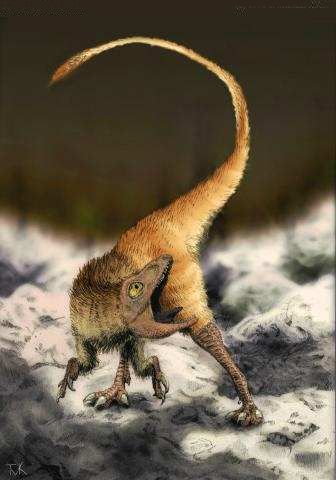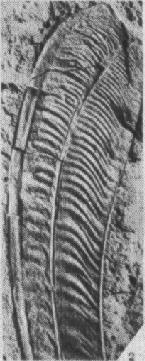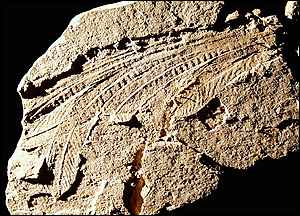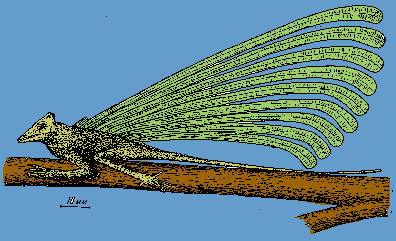There was another animal with very featherlike appendages that wasn't related to dromaeosaurs.
It was a lizard-like critter called Longisquama. But it didn't have a thermal body covering such as the dromaeosaurs had. Longisquama had very feather-like scales, but they only appeared in one uniform length down the side of its body.
At left is a detail of a Longisqama plume. Note the ridges along the boundaries, indicative of much thicker affectation than an actual feather could be. A feather is too wispy to produce such an impression. Not only that, but actual feathers are too delicate to support even the weight of a lizard in the manner suggested by the configuration of these scales.
Note also the regular serations eminating from the stem of each frond. Too solidly structured to have been made by the fronds of an avian feather. These regular undulations indicate a rigidity that is impossible for a feather. But even the bend at the end of each is consistent with a second-stage modification to scales.
That and the uniformity of length as well as their awkward position, (jutting suddenly out of the ribs) indicate that this was more likely a sexual display than a flying apparatus. Flight was impossible for Longisquama, no matter what the Disney movie wanted us to believe. There was simply inadequate control of these detached appendages even to be used for gliding! This lizard also lacks the lineage of the dromaeosaurs. Following Sinosauropteryx, nearly all of the maniraptors have so far proven to have feathers as well as bird-like skeletons and habits.




